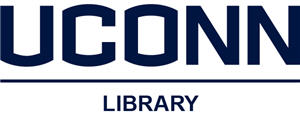Document Type
Article
Disciplines
Life Sciences | Marine Biology
Abstract
Anadromous blueback herring Alosa aestivalis are declining throughout much of their range, and fishery closures in some systems have failed to produce population recovery. A potential contributing factor is increased predation pressure from sympatric striped bass Morone saxatilis. We integrated data on the predator–prey interaction between striped bass and blueback herring during vernal migrations into the Connecticut River with data on the in-river striped bass fishery to assess the potential for mitigation of blueback herring mortality via increased striped bass harvest. Striped bass abundance, size structure, diets, and angler catches were assessed within a river segment during spring 2005–2008. We estimate that striped bass consumed 400,000 blueback herring (90% confidence interval = 200,000–800,000) annually in our study area during the spring migration season. The predator–prey interaction between striped bass and blueback herring was predator size dependent. Blueback herring were most commonly found in the stomachs of striped bass between 650 and 999 mm total length. Intermediate size-classes (650–799 mm) made the greatest contribution to population-level consumption. Highly abundant small striped bass (400–549 mm) consumed herring infrequently, yet still made substantial contributions to population-level consumption. Anglers caught 17,000 striped bass in our study area during March–June 2008; only 11% of these fish could be harvested under the current 28-in (710-mm) minimum length limit. Allowing anglers to harvest up to 15,000 sublegal striped bass from a “bonus harvest” slot limit would reduce annual predatory losses of blueback herring by up to 10%. Alternatively, a smaller bonus harvest of legal-sized striped bass could achieve reductions in consumption of up to 7%. The recreational fishery in our study area, however, may not be intense enough to realize such harvest levels.
Recommended Citation
Davis, Justin P.; Schultz, Eric T.; and Vokoun, Jason C., "Striped Bass Consumption of Blueback Herring during Vernal Riverine Migrations: Does Relaxing Harvest Restrictions on a Predator Help Conserve a Prey Species of Concern?" (2012). Open Access Author Fund Awardees' Articles. 5.
https://digitalcommons.lib.uconn.edu/libr_oa/5



Comments
Originally published in :
Marine and Coastal Fisheries: Dynamics, Management, and Ecosystem Science 4:239–251, 2012 C American Fisheries Society 2012 ISSN: print1942-5120 online DOI: 10.1080/19425120.2012.675972 Taylor & Francis and Routledge Open articles are normally published under a Creative Commons Attribution License http://creativecommons.org/licenses/by/3.0/. However, authors may opt to publish under a Creative Commons Attribution-Non-Commercial License http://creativecommons.org/licenses/by-nc/3.0/ Taylor & Francis and Routledge Open Select articles are currently published under a license to publish, which is based upon the Creative Commons Attribution-Non-Commercial No-Derivatives License, but allows for text and data mining of work.